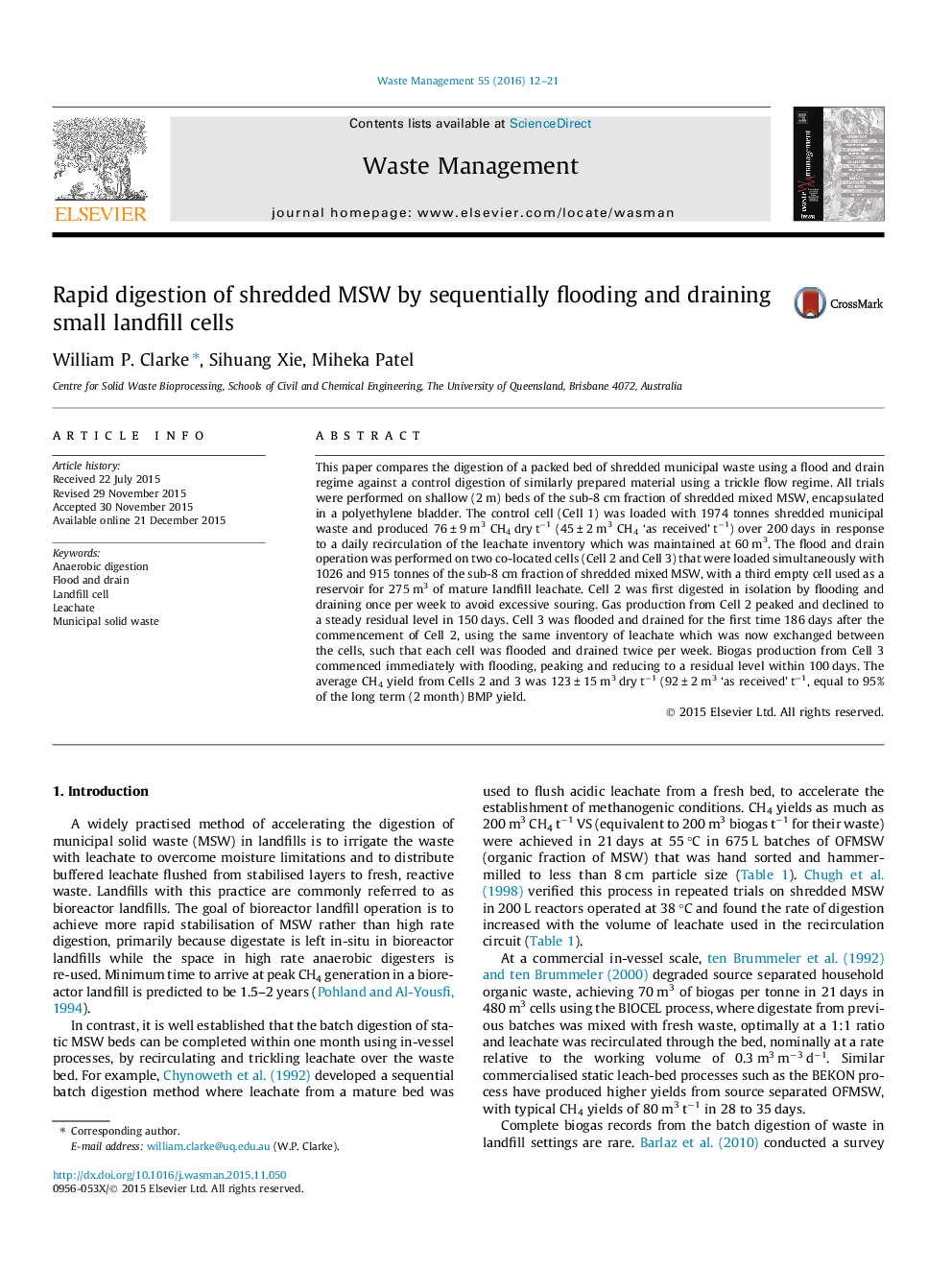| کد مقاله | کد نشریه | سال انتشار | مقاله انگلیسی | نسخه تمام متن |
|---|---|---|---|---|
| 4471178 | 1622631 | 2016 | 10 صفحه PDF | دانلود رایگان |
• Two 1000t beds of sub-8 cm shredded MSW were digested by flooding and draining with landfill leachate.
• A 1974t bed of the same material was digested by recirculating leachate at a similar rate using trickle flow.
• Flood and drain operation accelerated degradation compared to trickle flow operation.
• Over 95% of the 2 month BMP yield was achieved in the landfill cells operated as flood and drain cells.
This paper compares the digestion of a packed bed of shredded municipal waste using a flood and drain regime against a control digestion of similarly prepared material using a trickle flow regime. All trials were performed on shallow (2 m) beds of the sub-8 cm fraction of shredded mixed MSW, encapsulated in a polyethylene bladder. The control cell (Cell 1) was loaded with 1974 tonnes shredded municipal waste and produced 76 ± 9 m3 CH4 dry t−1 (45 ± 2 m3 CH4 ‘as received’ t−1) over 200 days in response to a daily recirculation of the leachate inventory which was maintained at 60 m3. The flood and drain operation was performed on two co-located cells (Cell 2 and Cell 3) that were loaded simultaneously with 1026 and 915 tonnes of the sub-8 cm fraction of shredded mixed MSW, with a third empty cell used as a reservoir for 275 m3 of mature landfill leachate. Cell 2 was first digested in isolation by flooding and draining once per week to avoid excessive souring. Gas production from Cell 2 peaked and declined to a steady residual level in 150 days. Cell 3 was flooded and drained for the first time 186 days after the commencement of Cell 2, using the same inventory of leachate which was now exchanged between the cells, such that each cell was flooded and drained twice per week. Biogas production from Cell 3 commenced immediately with flooding, peaking and reducing to a residual level within 100 days. The average CH4 yield from Cells 2 and 3 was 123 ± 15 m3 dry t−1 (92 ± 2 m3 ‘as received’ t−1, equal to 95% of the long term (2 month) BMP yield.
Journal: Waste Management - Volume 55, September 2016, Pages 12–21
